Tuesday Triage #96
- TUESDAY TRIAGE #96 by Vadim Drobinin
- On new ingredients
- Things I enjoyed reading
- 1. You're Not Losing Fat Because You're Eating Too Damn Much by @physiqonomics/
- 2. When to remove your iOS app from the App Store by @benoitpasquier_
- 3. A Messy Table, a Map of the World by Jason Farago
- 4. Why free stuff makes us irrational by Mark Dent
- 5. Master’s Degree in Computer Science by Evan Prodromou
- 6. Why I learned Hungarian late in life by Gerald Murnane
- 7. Would You Take Out a Loan for a Pair of Jeans? by Susie Cagle
- 8. Lessons learned from the recent job hunt by @jamietanna
- 9. The ‘E-Pimps’ of OnlyFans by Ezra Marcus
- 10. The Worst by @moxie
- Things I didn't know last Tuesday
- 1. Röstigraben
- 2. Better to negotiate without round numbers
- 3. Why does pepperoni curl
- 4. Laredo
- 5. Chocolate pudding fruit
- 6. Artichoke induces sweet taste
- 7. The cause of "old book" smell
- 8. Algae-powered computing
- 9. Cabbage Patch Kids
- 10. How Crossrail was affected by the curvature of the Earth
- Book of the week
- Thank you and see you in a week!
TUESDAY TRIAGE #96
by Vadim Drobinin ¶
Your weekly crème de la crème of the Internet is here!
17.05.2022 (read in browser)
-
Intro
Whatever is on my mind this week. -
Things I enjoyed reading
Ten-ish articles I found worth reading. -
Things I didn't know last Tuesday
Ten-ish facts I didn't know when I wrote the previous edition. -
Book of the week
Some thoughts on the latest book I've read.
On new ingredients ¶
I do my best to explore new ingredients or pairings pretty much every week, but this one was quite fruitful even to my standards.
Everything started with the weather: I rarely pick sparkling drinks, but nothing helps with the heat better than a scotch highball, especially when it's as good as this one.
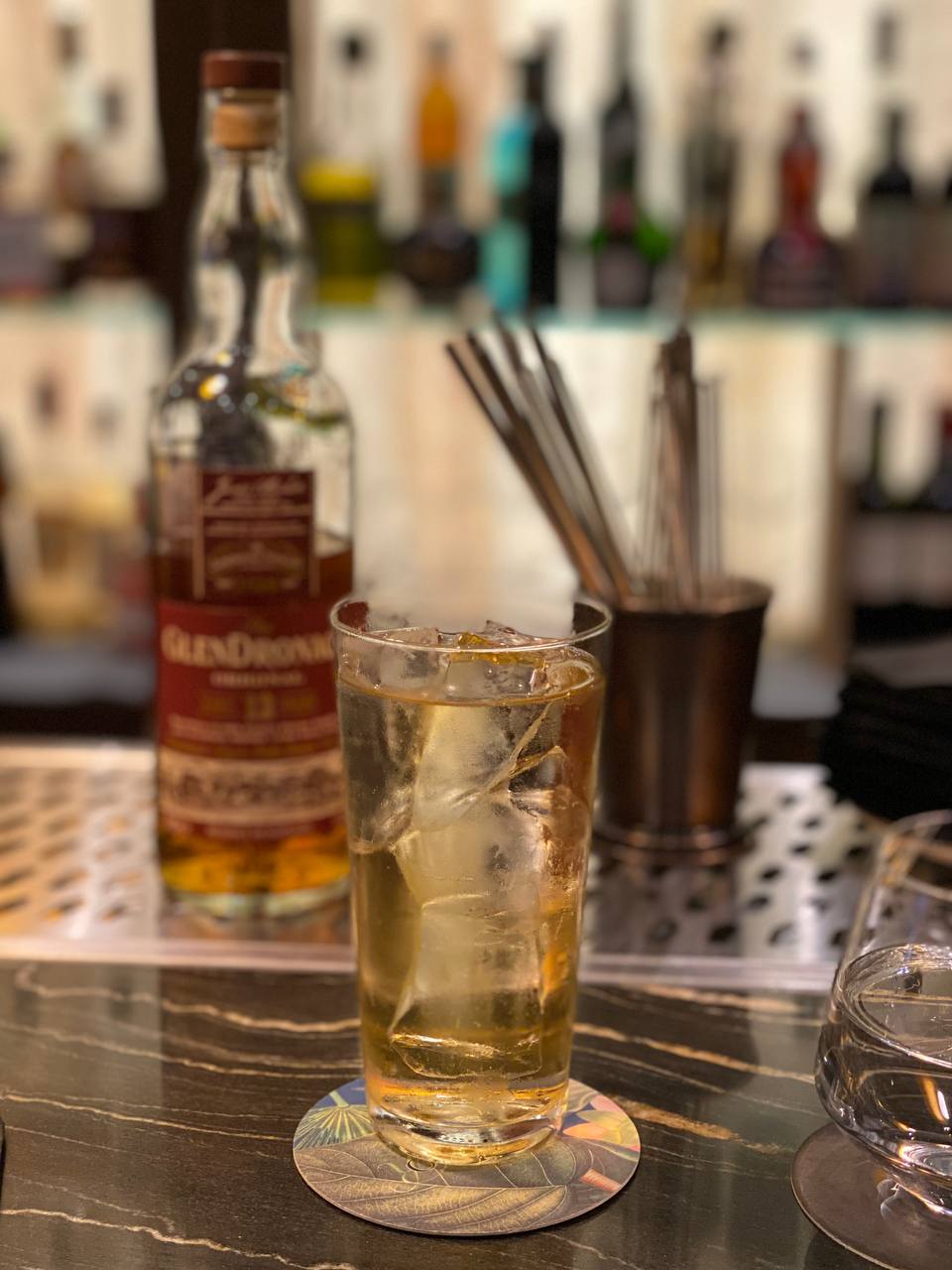
I am also not a huge fan of tapas or pintxos bars, unless they're in Logroño, but this one lured me in promising an Andalouisian-focused dishes and they didn't disappoint. These were the best carrots in my life (with a not-the-worst octopus in the background):
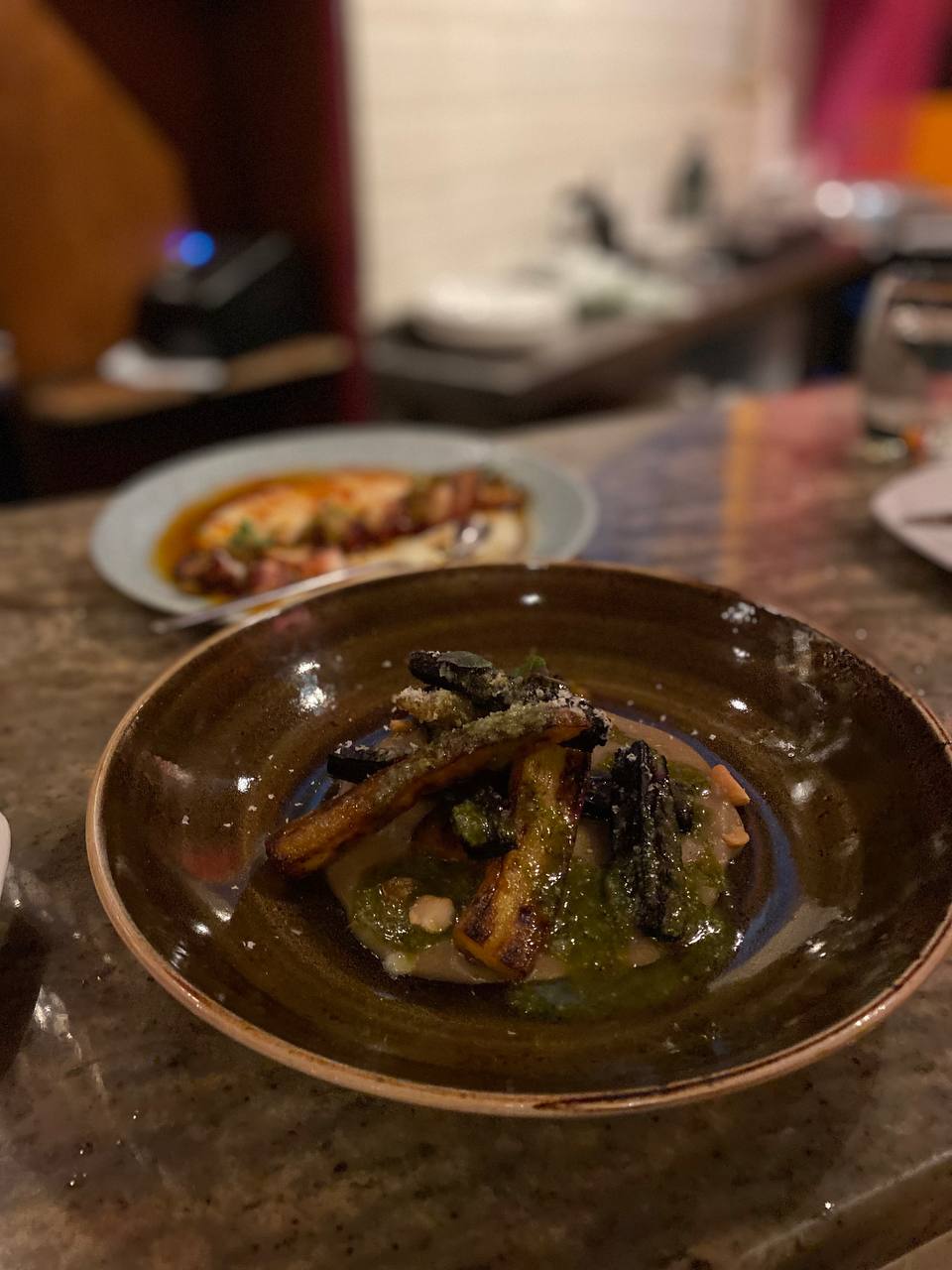
And also some croquettes and sweetbreads (my recent favourite):
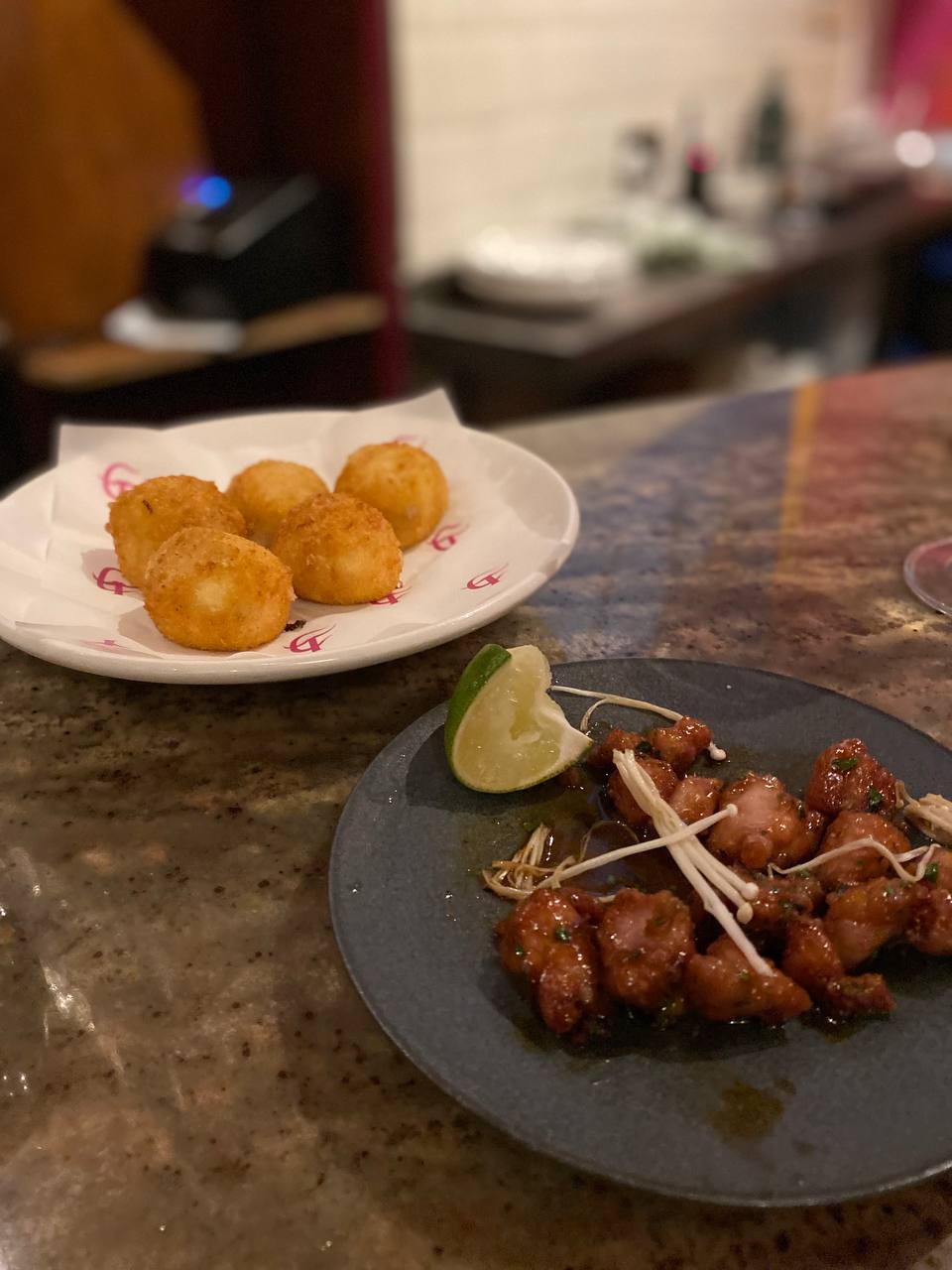
But the actual gems were in a grocery bag I got from some folks who grow Japanese herbs in a British countryside:
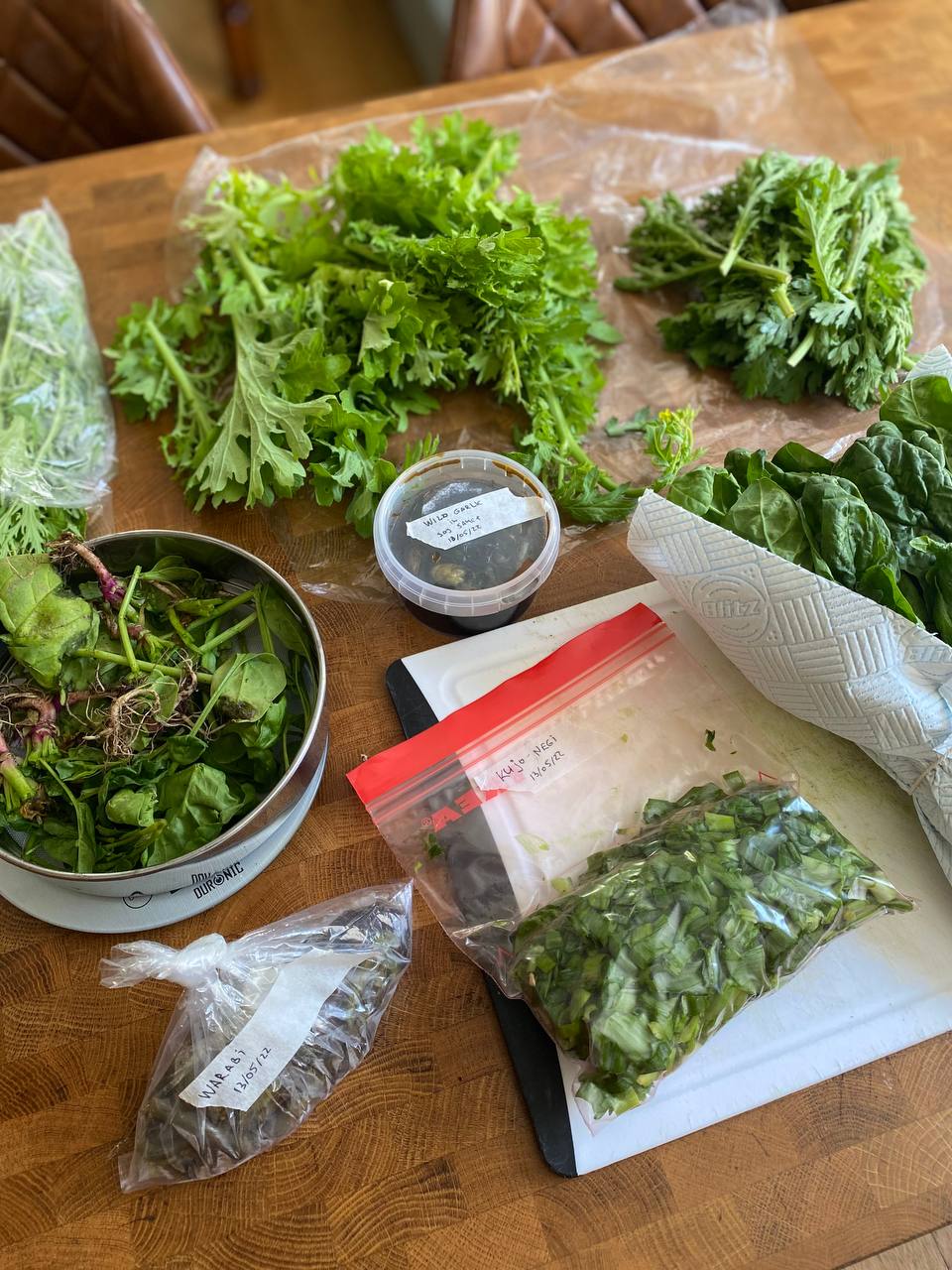
I probably didn't taste neither of those raw, so for a quick test we did some stir fry with warabi (bracken shoots), mizuna, wild garlic soy sauce, and kujo-nehi:
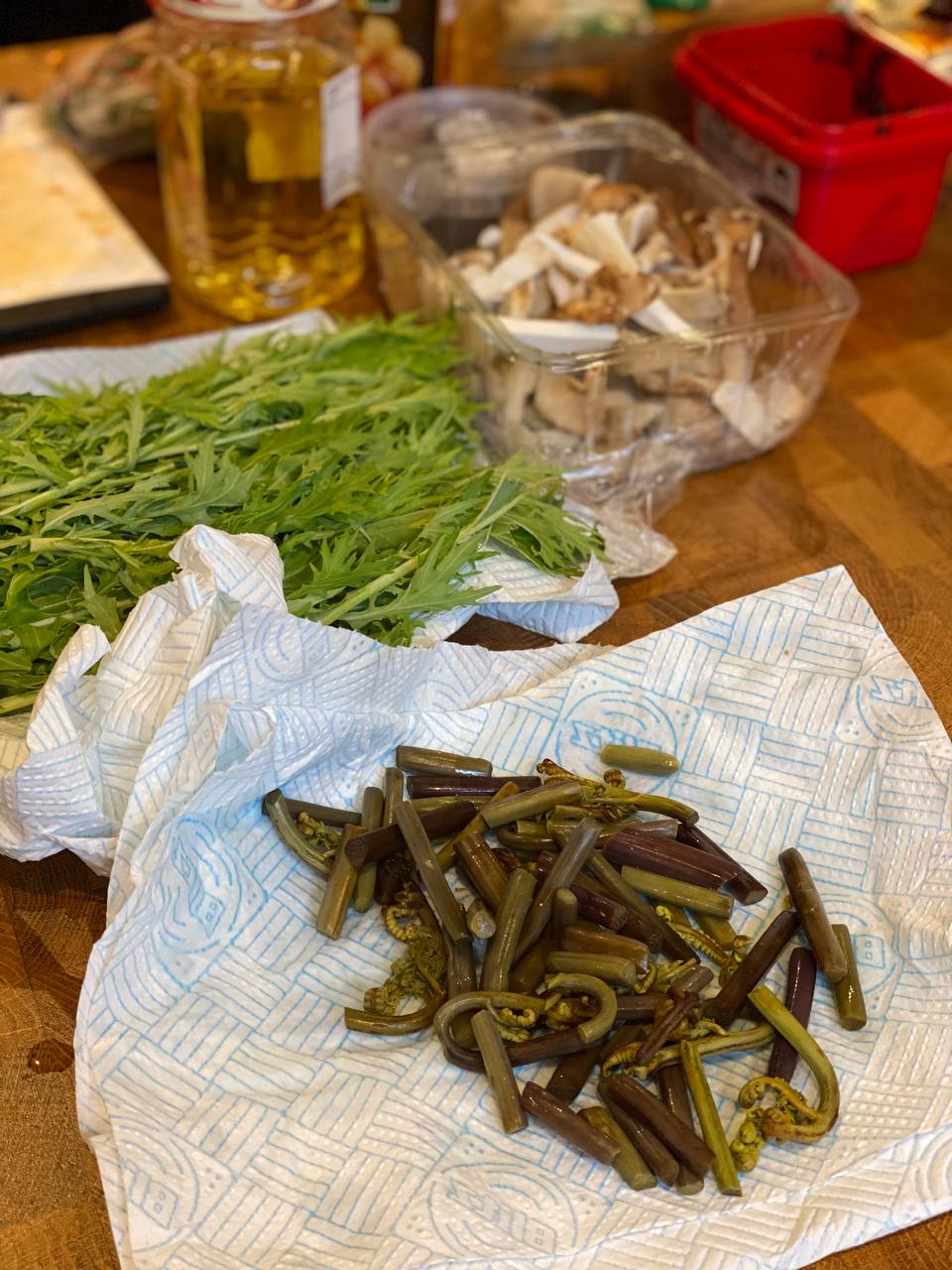
Worked out really well with konjac noodles, Gochujang paste, and veggies:

I still have a plenty of herbs left though, so probably will look into pesto recipes in the meantime.
Things I enjoyed reading ¶
1. You're Not Losing Fat Because You're Eating Too Damn Much by @physiqonomics/ ¶
For nearly six months I've been getting ready for summer (which is here in the UK starts quite late), and a part of the experience includes counting all calories I consume, so I definitely relate to this great and very detailed post on mistakes we make when trying to loose weight:
It might not be as simple as calories in versus calories out, but calorie awareness is still our best defence against an obesogenic environment that encourages us to overeat.
Calorie tracking is a life skill that will eventually lead you to understand portion sizes, what an actual serving size of meals at your favourite restaurants looks like. You’ll soon be able to ‘eyeball’ or ‘guestimate’ calorie count of foods without having to track. But you have to start with the basics first.
My biggest suprise was the amount of calories in a single tub of Pringles. I could have two of these during a long movie, but that is apparently ~ 2000 calories (510/100 g), so I had to pretty much quit them completely.
2. When to remove your iOS app from the App Store by @benoitpasquier_ ¶
A much needed essay on finding the bravery to sunset projects when they are not of use anymore.
I looked around for a new replacement service but the ecosystem change quite a bit since 2017, there are new train and transport companies with better services that I could deliver. They also had ownership on their data and make a business from iti, something I couldn’t do.
In short, my app was no longer needed: it fulfill its purpose for a while until it didn’t anymore. The same week they terminated their service, I sunset the project remove it from the App Store.
I have a few apps in App Store that weren't updated for ages. Some of them were probably unlisted by Apple for inactivity, but some might still be out there, and while they wouldn't even benefit to my CV much, there is something that stops me from terminating them completely.
Probably it's time to reconsider that.
3. A Messy Table, a Map of the World by Jason Farago ¶
And back to my favourite media format out there: interactive explanations of paintings to folks who have no art education (like myself):
There are also little peppercorns, rolled in an almanac page and spilling out onto the plate. In the 1630s, this was quite the extravagance. The Dutch today still express sticker shock with the word “peperduur” — as expensive as pepper.
The quote obviously can't do it any justice, and the experience is way better when previewed from a desktop.
4. Why free stuff makes us irrational by Mark Dent ¶
An interesting summary of a research into ways people react to free stuff:
According to the 2019 Walker Sands Future of Retail Survey, 77% of 1.6k respondents said free shipping had made them more likely to buy an item online, ranking far above inducements like same-day shipping or the ability to visualize products in 3D.
[...]
The consumers he studied preferred to save $6.99 and get free shipping, versus saving $10 on the purchase price but still pay for shipping, even though the savings would have been greater.
While I would probably err on the total price rather than a benefit of a free shipping, I would definitely change my mind when presented with an opportunity to receive something the same day or as soon as possible, rather than to wait for a month to get a slightly cheaper alternative.
5. Master’s Degree in Computer Science by Evan Prodromou ¶
I enjoy thought-through arguments for continuing education in CS or software engineering: mostly because I would never do it myself (albeit I might change my mind for the right major, i.e something very food-related):
I’ll also say that the best graduate school for computer science is not necessarily the best graduate school to get a master’s degree. A master’s degree is probably most useful for a professional career, and thus you’d concentrate on technologies that are in more common use, and also on engineering practices like quality assurance or requirements management.
That being said, seems like in the last few years the amount of universities willing to accept remote students increased tremendously, which is definitely great.
6. Why I learned Hungarian late in life by Gerald Murnane ¶
A pretty much an ode to a language I happen to hear live occasionally, but never thought of learning myself (despite coming from a place where Hungarian predecessors used to live).
He heard me out politely enough, but I wondered afterwards how much I had managed to explain. Then, a few months later, I read a report of an interview with Joe in the Hungarian-language weekly, Magyar Élet. The interviewer, Livia Bagin, at one point asked Joe about the Australian writer who was learning Hungarian from him. Joe spoke briefly about me and then, in one neat Hungarian sentence, reported what must have seemed to him the best summary of all he had heard from me about my reasons for making an old, Asian tongue my second language.
#Azt mondja, hogy az angyalok a mennyországban magyarul beszélnek.
He says that the angels in heaven speak Hungarian.
This one article probably wouldn't change the languages I want to learn first (that is, Italian and Hebrew), but might actually influence the next ones.
7. Would You Take Out a Loan for a Pair of Jeans? by Susie Cagle ¶
This story is nearly five years old, so the world has changed quite a bit, and yet this industry didn't change much: neither the startups, nor the consumers:
The far bigger, high-stakes Affirm innovation is its proprietary consumer risk-assessment scoring, or underwriting system. Without the fees that make upward of half of some credit card companies’ revenue streams, Affirm has to make up ground with volume. The company proudly lends to consumers who the larger market and traditional credit reporting standards would define as subprime, but its default rate is “well below the industry average,” says Metcalf. Affirm is heavily incentivized to find those good customers, bad FICO score or not. And it does so by compiling a broader, more complex, and ever-shifting set of details about every loan applicant.
We closer we are to Metaverse, the more attention will be payed to the field of verifying one's identity and assessing related risks, so that's the one to watch out for.
8. Lessons learned from the recent job hunt by @jamietanna ¶
These days I mostly interview others rather than get interviewed myself, so reading about folks' experience is rather insightful, especially when it's so up-to-date:
While I was still in the process of interviewing, I made a point of challenging it and asking whether it was representative of the role, to which they said no, and I was a bit like, well why do it then? 🤷 It's also one of those things that I'd argue is less important, because you may be pre-optimising a solution that may be used for a proof of concept and then be rewritten, or you can learn through production metrics or performance testing that the area of the codebase isn't ideal.
I do ask about the Big O notation myself, although usually only if a candidate mentions some related experience in their CV (e.g by listing a bunch of Coursera certificates). It never leads to a rejection though, just gets mentioned as a yet another factor.
9. The ‘E-Pimps’ of OnlyFans by Ezra Marcus ¶
As OnlyFans is only getting more and more popular, there is no lack of high-quality longreads coming up pretty much monthly. This one is about the whole industry aimed at lonely people behind the other side of the paywall:
“An 18-year-old girl, she texts different than a 25-year-old girl, you know, or an older lady,” he explained. “An older lady won’t use emojis; she’ll use, like, a semicolon and parentheses for a winky face, when a younger girl will actually use a winky emoji.”
He pulled up a page with a young model wearing pink-striped thigh-high socks, opened a chat with a subscriber and typed out: “Heyy daddy !”
“You see how there’s a space before the exclamation mark?” he said. “Yeah, that’s how 18-year-olds type.” When it comes to sales, Rosero said, those details make all the difference.
So if someone is chatting with a model, the chances are the "model" is actually a dude with a bunch of open chat tabs (because dudes understand other dudes better, apparently).
10. The Worst by @moxie ¶
While I can easily see a reason behind paying $50 for a set of cuttlery for one, I tend to agree with the author here: overconsuming of material goods is not as beneficial to one's life as it is often promoted.
Those five “instruments” are $50. Fifty dollars for a single fork, knife, and spoon (the smaller items are a salad fork and tea spoon — and I’m sure it would be strictly bush league to use them for any other purpose). Is the kitchen drawer that Dustin keeps these vessels in also the very best of its kind? We’re left to wonder, but presumably so.
Functional things are way better. There is nothing wrong in updating them for a better versions eventually, but these upgrades need to be driven by function rather than the concept of it.
Things I didn't know last Tuesday ¶
1. Röstigraben ¶
Rösti are like hashbrowns but for Swedish German-speaking folks. Graben is a ditch. Röstigraben split the country into two parts based on the way they cook those hashbrowns:
Röstigraben is a term used to refer to the cultural boundary between German-speaking and French-speaking parts of Switzerland, the latter known in French as the Suisse-Romande. There is also a term Polentagraben which refers to the boundary between German-speaking cantons and the Italian-speaking canton of Ticino.

And the same happens with polenta.
2. Better to negotiate without round numbers ¶
Next time I am trying to make an offer on Ebay, I am going to use this tip:
Their research builds on several previous social psychology studies showing that people place more value on precise numbers than on relatively round numbers. People tend to assume, true or not, that someone must have crunched lots of data to come up with an amount so specific. A round number, on the other hand, suggests that a person is just ballparking it—offering an approximate valuation based on vague knowledge.
So no more £100 offers, only £97.8 or £101.2 to make sure everyone understands how much research I did.
3. Why does pepperoni curl ¶
Sadly there is no simple answer, but there are some ideas (and a great deatailed article behind them for those interested):
So that's interesting. You need to make your pepperoni with a natural or collagen casing to get it to curl, but once it's been stuffed, that casing no longer plays a role. What the heck? What's special about that casing?
There should also be some research papers, but I couldn't find anything yet.
4. Laredo ¶
Here in England there is a fake American Wild West town, built by re-enactors who bring it to life on the weekends.
There is no running water or electricity, but there are gaslights and woodstoves (practically, bright red, hand-painted “Fire” buckets are everywhere). We are still in England, just a 35-minute train ride through unlovely suburbs and lovely countryside from London to a Kentish village, and there are some giveaways; the weather, for example, is damp and chilly in a way England excels at. But members have worked hard to create the illusion that we’re standing on the main drag of a hardscrabble town in the barely settled American West, sometime between the 1860s and the 1890s. And weirdly, wonderfully, it succeeds.
They mostly survive thanks to the movie industry these days, but getting inside is rather hard anyway (unless there is an Open day, but the last one was in 2013 or so).
5. Chocolate pudding fruit ¶
Not so long ago I learnt about a fruit that tastes like Peanut Butter & Jelly sandwich. Well, there are more exotic fruits out there:
Black sapote fruit are tomato-like and measure 5–10 cm (2.0–3.9 in) in diameter, with an inedible skin that turns from olive to a deep yellow-green when ripe and a pulp which is white and inedible when unripe but assumes a flavor, color and texture often likened to chocolate pudding when ripe. Fruits usually contain seeds, up to a maximum of 12. The texture has been likened to that of a papaya. Boning (2006) describes the ripe fruit as having "the taste and consistency of chocolate pudding.

This one doesn't grow anywhere closeby either, so I will just add it to my bucket list too.
6. Artichoke induces sweet taste ¶
Artichokes contain chlorogenic acid, which makes things taste sweet:
Exposure of the tongue to artichoke can make water taste sweet. Two major active components of artichoke are the salts of chlorogenic acid and cynarin. The sweetening of substances by temporarily modifying the tongue, rather than by adding a substance sweet in itself, may provide an alternative to currently used nonnutritive sweeteners.
The same acid is in a bunch of other vegetables, but seems like the rest doesn't get this trait. Might be handy for low-calorie snacks.
7. The cause of "old book" smell ¶
This very recognizable smell is caused by a compound in wood-based paper which breaks over time.
A common smell of old books, says the International League for Antiquarian Booksellers, is a hint of vanilla: “Lignin, which is present in all wood-based paper, is closely related to vanillin. As it breaks down, the lignin grants old books that faint vanilla scent.”
For those wondering, "old books" are the ones made with wood fibers – so starting from the mid-19th century. Everything before was mostly printed on cotton and linen.
8. Algae-powered computing ¶
Some researchers managed to build a microprocessor that was powered for more than a year by only light and water, thanks to a widespread species of blue-green algae:
The algae does not need feeding, because it creates its own food as it photosynthesises. And despite the fact that photosynthesis requires light, the device can even continue producing power during periods of darkness. The researchers think this is because the algae processes some of its food when there’s no light, and this continues to generate an electrical current.
I am quite surprised it didn't make the news yet.
9. Cabbage Patch Kids ¶
A colleague mentioned these collectables to me and they look quite creepy, but apparently was used to prove to kids that children are found in cabbage leaves:
Cabbage Patch Kids are a line of one-of-a-kind cloth dolls with plastic heads first produced by Coleco Industries in 1982. They were inspired by the Little People soft sculptured dolls sold by Xavier Roberts as collectibles and registered in the United States copyright office in 1978 as 'The Little People'.

I don't remember anything similar to it in my childhood, but quite a few people remembers them so must be a more Western thing.
10. How Crossrail was affected by the curvature of the Earth ¶
This month a new Tube line is launching in London, which is obviously big news given how much it was delayed. In the meantime I was looking into the history of the Tube itself and came across this passage:
For example, Tottenham Court Road had a gap so tight that had they not adjusted for the curvature of the earth, the tunnel boring machine that left Paddington would have been sufficiently out of place by the time it arrived, that the cutting head might have drilled through the Northern line tunnels.
So as the tunnels under the city are so long, without taking the curvature into account the tunnels won't line up when they meet.
Book of the week ¶
As I mentioned, the warm weather makes me do things I'd never do otherwise, like drinking highballs or sour cocktails. I don't know many of those, and as the result usually try to up my game by imitating those who are way better at it.
This time I came across Masahiro Urushido's The Japanese Art of the Cocktail:
The classic Negroni has inspired countless variations, and Katana Kitten’s is named after Meguro, the Tokyo neighborhood nearby where I used to live. The banks of the Meguro River are lined with thousands of sakura (cherry blossom) trees, and when the blossoms are in season, locals head over to take in the gorgeous views. In this drink, I swap out the traditional gin for genever, since its round and malty flavors work best with the drink’s other ingredients. Instead of vermouth, we use a full-bodied umeshu (plum liqueur) that has a color akin to sweet vermouth and a similar sweetness level, yet tastes completely different and totally transforms the drink. The umeshu’s base is actually Japanese blackstrap rum. Lastly, instead of the traditional Campari, we opt for an aperitivo liqueur made with bitter Calabrian oranges. The final touch is a garnish of fresh kinome leaves.
I didn't know much about the Japanese cocktails, besides some exposure to mizuwari and a few sake tastings, but seems like there is way more to it than good whiskey and beautiful ice.
Probably the biggest takeaway for me is the way they tend to play with the presentation, that is rarely minimalistic in its common sense, but is still very balanced.
The same applies to flavours: mizuwari and whiskey highballs might seem simple and straighforward, but they are obviously more complex than mere combinations of booze and bubbles. The choice of seltzer changes the saltinnes of the pallete and affects the way the flavour lingers after a sip, while the scotch or whiskey might pack multiple layers of complexity.
The book also features a bunch of recipes: some of them call for odd ingredients which makes total sense, but the majority does a great job explaining the ideas first, so they could be easily used as templates for your own ideas.
Thank you and see you in a week! ¶
If you have any questions, or want to suggest a link for the next newsletter, please drop me a message on Twitter or reply to this email.
Cheers! 🍸